Being an exotic plant, Nymphaea tetragona is usually used in various pond or pool decorations. However, it requires a very balance environment and several care tips such as constant sunlight, water free of contamination, right nutrients, and water pH, and it is recommended to remove the dry leaves from the water. In this article, learn about How to Plant Nymphaea Water Lily Nymphaea tetragona and Nymphaea alba.
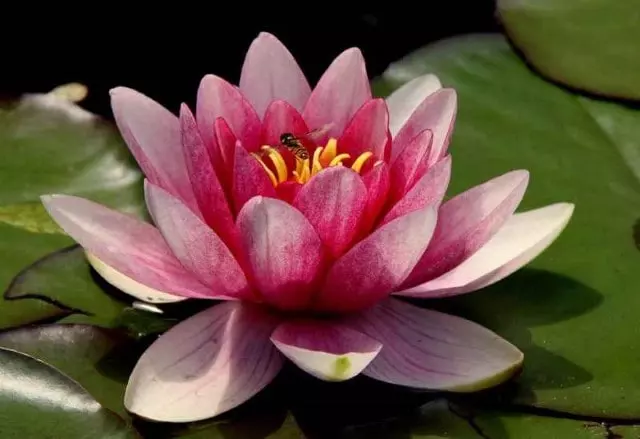
Table of Contents
Scientific Name for Water Lily
Water lily’s scientific name is Nymphaea tetragona
Water lily is an aquatic plant that belongs to the family Nymphaeaceae and whose scientific name is Nymphaea tetragona (genus Nymphaea).
Nymphaea tetragona Water Lily
Nymphaea tetragona Water Lily. The water lily is a plant native to Africa and some areas of Asia where it can be found in lakes or ponds of very calm or stagnant water. It can be identified by its oval or round leaves and large petioles that float along with its flower.
Now, the Nymphaea flower can be of different shades such as white, pink, crimson, or yellow, so they are very colorful. In addition, this flower emanates a fragrance very similar to that of brandy on the first day of its blooming.
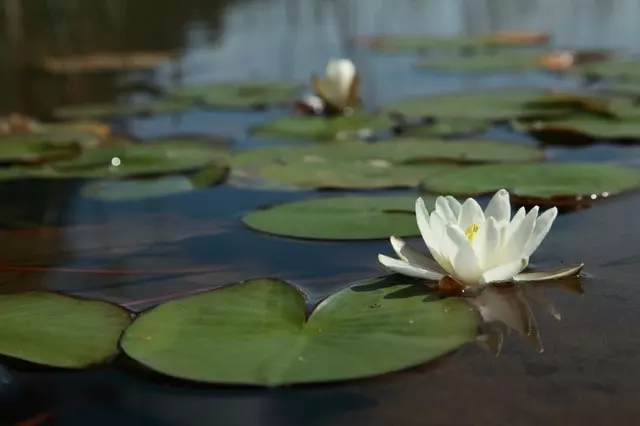
Water lily Nymphaea tetragona Characteristics
Habitat: Nymphaea plants live on flat bottom ponds and lakes protected from forests, and slow-moving waters. Nymphaea roots are long, they can measure between 4 and 5 meters, so they can grow in deep water.
The Pamplemousses Botanical Garden, founded in 1736 during the French colonial era, is one of the oldest botanical gardens in the southern hemisphere and exhibits these giant water lilies in the town of Pamplemousses, north of Mauricio Island, close to the coast of Madagascar.

Nymphaea tetragona has a long rhizome that reaches the surface of the water, it is fleshy, knotty, and starchy. This rhizome is nourished by the materials found at the bottom of the water.
Nymphaea Leaves. The Nymphaea plant has two types of leaves, some that are underwater and others that float on the surface in an oval or circular shape. Floating leaves are 2.8-4.7” (7-12 cm) long, ovate to oblong, and unequal. Leaf petiole slender and flattened. Submerged leaves with a smooth blade.
Nymphaea leaves control algal growth and protect fish from external predators.
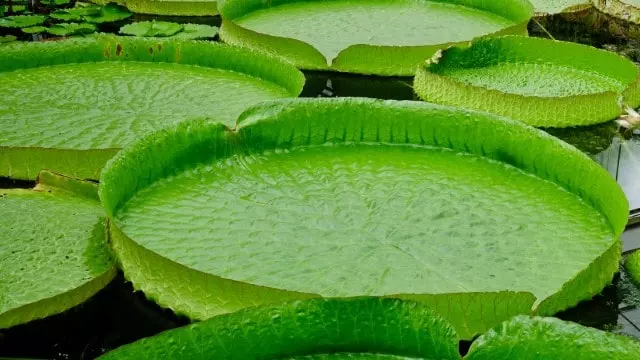
Nymphaea tetragona flowers are large, with many petals, and float on the surface of the water just like the leaves of the water lily. Nymphaea tetragona flowers are bowl-shaped, 2.5 cm (1 in.) wide, with a quadrangular receptacle. The numerous petals are white, rarely red, or purple with four sepals.
When Nymphaea tetragona Blooms
Nymphaea tetragona blooms from May to August and the flowers last about five days. In a natural environment, seeds germinate at the bottom of the water.
Pygmy Water Lily
Pygmy Water Lily has the smallest flowers of the water lily species growing in Finland, but many believe them to be the most beautiful. The Pygmy Water Lily is absent in the other Nordic and central European countries. The red-flowered varieties of Pygmy Water Lily are protected in Finland.
How to Plant Nymphaea Water Lily
How to Plant Nymphaea Water Lily. Some of the tips to grow Nymphaea Water Lily properly are the following.
- Maintain hygienic water conditions and use suitable fertilizers for aquatic plants during the year and especially before flowering.
- Add fertilizer into the water between March and April (before blooming time).
- When choosing the location to grow water lilies, you should provide deep but quiet water without drafts.
- The root growth process of this plant is slow and requires still water to develop extensive roots.
- Water lilies require direct sun for many hours. Otherwise, there will be no bloom.
- When growing the dwarf varieties, such as Pygmy water lily, a pound is not necessary. They can be grown in small containers. Keep in mind that dwarf water lilies varieties require the same nutrients as varieties grown in water and pounds. And they require full sun.
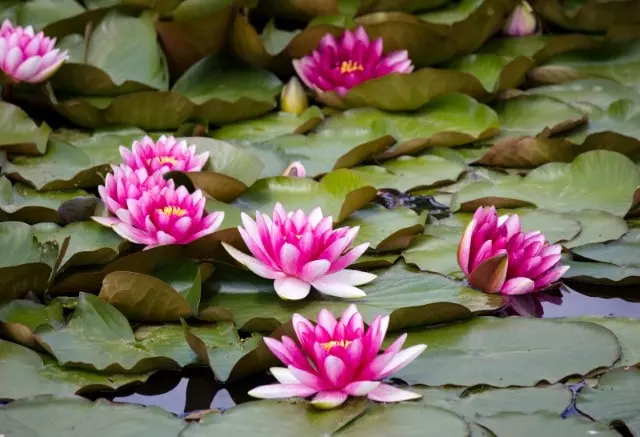
Nymphaea tetragona Benefits – Antibacterial Activity
Scientific research showed that Nymphaea tetragona has antibacterial action against S. typhimurium, including Salmonella antibiotic-resistant strains, alone and in combination with medicines.
Salmonellosis is a frequent and extensively spread food-borne illness caused by Salmonella typhimurium, which is one of the most prevalent etiologic agents. Different techniques were used to evaluate the antibacterial activity of Nymphaea tetragona extract.
The findings suggest that combining Nymphaea tetragona extract with antibiotics might be beneficial in combating drug resistance. Salmonella infections and polyphenols are intriguing novel components found in Nymphaea tetragona that should be studied further as a potential anti-Salmonella agent and quorum sensing inhibitor.
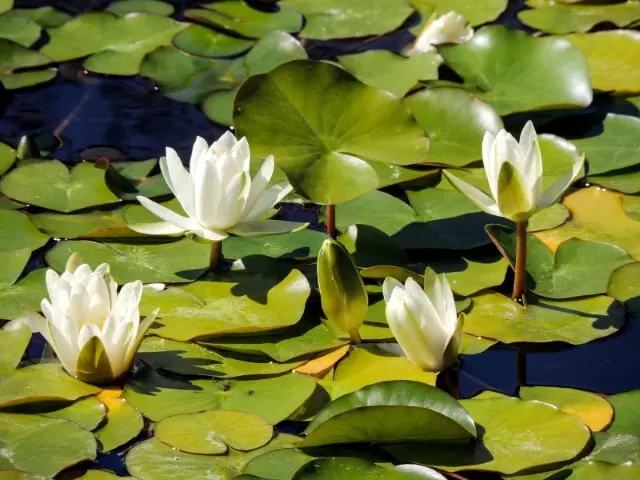
Nymphaea alba
Nymphaea alba is a species belonging to the genus Nymphaea, as well as Nymphaea tetragona. Nymphaea alba is one of the most common water lily species in temperate climate zones.
Nymphaea alba is native to Europe and Asia.
This type of Nymphaea is great for medium to large ponds, even deep ones. it can grow to a depth of more than five feet. Nymphaea alba can grow both in the ground and in containers, it will grow much larger if grown in the ground at depths of one meter and more. Flowering is excellent, from April to September or from May to August depending on the weather conditions.
Nymphaea alba Leaves. The leaves are a beautiful emerald green color and can reach considerable size if planted deep, the flower is pure white with yellow stamens.
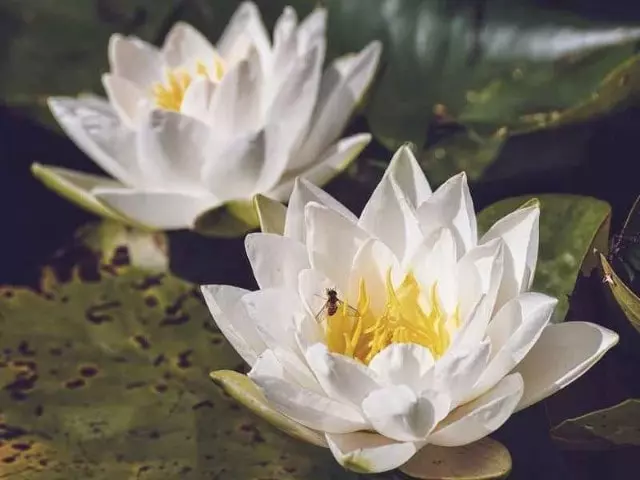
Where to Buy Water Lilies?
The rhizomes and seeds of water lilies and lotus flowers can be obtained in e-commerce stores. Here we mention only some of the items that we recommend from our experience and from the comments of our users.
- FIRST : This is live water lily tuber. Nymphaea Joey Tomocik Yellow (Hardy)
- FLOWERING : Very attractive leaves and beautiful flower, water lily also help reducing algae by providing shade in where they grown. And the golden stamens at the center of f helvola make your pond elegant.
- AMAZING : Our water plants are grown using the latest technology and facility with a digital controlled nursery to ensure that our plants are diseases pest snail and algae free.
- 1. High germination lotus flower seeds (about 95%), easy planting and fast growing plants. It can help to purify water and air.
- 2. These aquatic plant flower seeds will take about 1 week to sprout when the temperature is between 18-30 Celsius(64-86 Fahrenheit), about 2-3 months from seedling to bloom.
- 3. Mixed pink & red flower with mild fragrance, the seeds are edible and the dry lotus seedpot is also a good vase decoration.
- Contains one (1) PONDCARE AQUATIC PLANT FOOD TABLETS Potted Plant Fertilizer 3.8-ounce
- Contains essential nutrients and iron for lush green growth.
- Feeds pond plants and stimulates beautiful blooms all season long.
Do you like aquatic plants? Check out these articles
World’s largest plant of 200 Km2 in Australia – Australian Posidonia (Posidonia australis)
Water Hyacinth Care – Ultimate Guide



